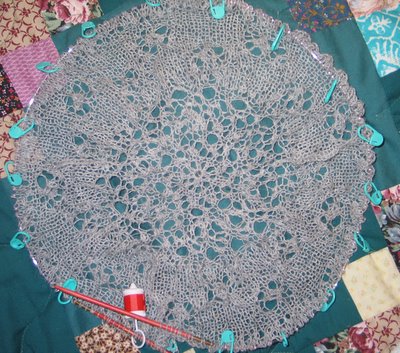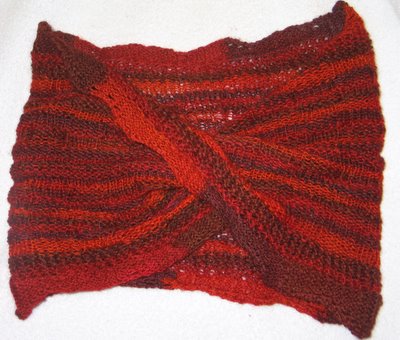“I’m not a fancy spinner, but I only use two whorls – slow and fast!”
The discussion was about the range of ratios a new spinner might want to use on a wheel. I had given a thoughtfully-reasoned response regarding possible uses for the ratios of the wheel she was considering, along with a recommendation that she might want to look at wheels that offered more alternatives. This comment felt like a personal attack from a most unexpected source - another spinner!
My initial response was to fire off a volley of my own, but luckily I cooled off and erased it before posting. So far I haven’t responded at all, and don’t intend to do so on that forum. Rude spinners are luckily few and far between, but to my mind rudeness should never be encouraged by attention! Then I started
thinking about the remark, and those thoughts are what I’d most like to share here.
First, let’s make it very clear – I’m not a ‘fancy’ or ‘expert’ spinner. I’m not a ‘professional’ spinner, nor a particularly ‘precisionist’ spinner. I’ve learned enough about spinning, both from study and from experiment, to usually be able to figure out why yarns and fibers combine in a certain fashion, and if I can’t figure it out alone I check my reference books and/or post a query to the fiber lists.
I have gotten to know the possibilities and limitations of my tools in the same way that any other craftsman does. I’m constantly exploring the fascinating possibilities of various fibers, both alone and in combination. I consider myself a ‘mindful’ spinner in much the same way that I’m a ‘mindful’ knitter, tatter, crocheter and weaver. As I’ve said before, my great-grandmothers were spinners – they’d have
loved the variety of fibers and textures available now! Their idea of a new fiber was a new breed of sheep's fleece!
I don’t have a vast storehouse of practical experience about every known fiber – although I'm pretty good with several specific fibers. There are so many spinning fibers available these days that we don’t
need to completely explore all the possibilities of a single type of fiber – besides, it’s too much fun to try the next one out there! I’m as susceptible to this sort of browsing as any other spinner. I have learned a great deal about spinning certain types of yarn, however, mostly because I’ve wanted to produce specific yarns for a frequently-repeated purpose.
One example is sock yarn; I’ve become something of an expert sock-yarn spinner simply because I’ve been spinning yarns for socks for several years now. If you spin and knit enough yards for a specific sort of project you learn what works best for that general project. If your desire is to make a wardrobe of handspun socks that you can wear for several years, you learn how to spin yarns that will give that sort of wear.
Another example is gossamer ‘thread’ for lace knitting – I love lace, love knitting, and have learned to spin different fibers very fine in order to feed that ‘addiction.’ I’ve learned which wools and wool blends I prefer for shawls, how to reel and throw silk, how best to spin and ply silk and fine wool singles for various lace projects, and that I don’t particularly care for using singles yarns in my own shawls. More importantly, I can repeat my results when I need a specific yarn. Mindful spinners do keep at least rudimentary records.
I’m currently exploring the possibilities of singles wool as weaving yarn, and learning that much of the conventional wisdom is absolutely correct – but that you can push the envelope, too. I love silk, medium-fine and fine wools, and various exotics, so my spinning has concentrated on those fibers. They can behave quite differently in a woven fabric than in a knitted or crocheted one.
You learn by a combination of research and experience. If you don’t learn anything from your explorations, you waste time and perfectly good fiber re-learning things. If you prefer to simply sit and spin whatever fiber in whatever fashion, holding it for a possible later use or just to pet occasionally, that’s fine. It’s your time, your fiber, and ultimately, your money. But please don’t be snide because my choice is different! There is plenty of room in the spinning world for both of us, and we can both do what makes us happy.
Now for an elaboration on what I originally posted to that list. Modern spinning wheels are generally designed to be suitable for a fairly wide range of fibers simply because that’s what modern spinners want. But some wheels are better than others at some things. That’s why we look at things like ratios, and I was happy to see that sort of relatively sophisticated question from a fairly new spinner. It shows that another ‘mindful’ spinner is on the way!
Anyone who has been spinning for awhile knows that some wheels are better suited than others to certain types of spinning. The ‘best’ wheel for spinning cotton is almost certainly a well-tuned charka. I don’t usually use a charka for spinning cotton, because I don’t have a well-tuned one handy (I built my own, and while it works, it takes a lot of tinkering) and do have a high-speed accelerating head for my Majacraft. So I use my Rose to spin cotton, cashmere and other fine, short fibers.
Saxony- or Canadian- or Norwegian-style wheels with large drive wheels are best for serious production spinners because a single push of the treadle gives the most efficient return for your effort. Great wheels can spin large amounts of woolen singles wonderfully well. That’s exactly why I tend to use my Symphony when I want to produce lofty woolen-spun yarns in large amounts fairly quickly. Can I use my Rose or Ashford Traveller to do the same thing? Yes, but not as easily or as quickly. It’s akin to using a pocketknife to cut down a tree – you can do it, but why bother when a good sharp saw is only a few steps away?
So why do I advise a new spinner who has up until now only knitted worsted-weight sweaters to look at wheels that have the capability of spinning gossamer-weight yarns and fine, short fibers? Because people change. A wool sweater knitter sometimes decides to knit a fine lace shawl for a new grandbaby or bride, or a rustic cotton sweater for a family member who lives in the Florida Keys. The new knitting needles for this project are fairly inexpensive (if they’re necessary). A new spinning wheel, however, is a more serious investment. Why not give a bit of forethought to the choice in the beginning?
I can hear you saying it now, “But you can spin cotton or cashmere yarn at an 11:1 ratio!” Of course you can. I’ve done it. But it’s much easier and faster to do it at a 20:1 or even 32:1 ratio. If you’re going to spend upwards of $300 U.S. on a spinning wheel, why not get one that will allow you to do that IF YOU CHOOSE? That’s called contingency planning, and it’s just garden-variety common sense.
Think about other times you plan for contingencies. You need toilet tissue in the upstairs bath today. You can choose to buy only one roll, or you can plan ahead, knowing that the downstairs and guest baths will need toilet tissue later in the week. Why return to the store for a single roll three times, when you can do it all in one trip? Ditto groceries. Why purchase flour for only that day’s cookies when you know that you’ll need it again for pancakes later in the week?
Both of those are rather simplistic, but they’re still valid examples of contingency planning. That sort of thinking should apply to our fiber tools as well as our kitchen and pantry shelves.
Spinning wheels should be general-purpose machines.
Spindles are specific-purpose tools; a light spindle for a fine yarn, a supported spindle for short, slick fibers, heavier spindles for plying or coarser fibers is the accepted wisdom for good reason. But wheels for hobbyist (not production) spinners are different to my mind. They should, with minimal tinkering by the spinner, be able to produce an acceptable version of any type of yarn. It’s that phrase “with minimal tinkering by the spinner” that gives a hole large enough to drive a great-wheel through. What one spinner considers ‘minimal’ another considers ‘way too much trouble’. That’s why one spinner likes a Babe while another considers a Schacht the only way to go.
The following is directed to any spinners who’ve ended up here hoping for advice on choosing a wheel. You’ve heard it before, and you’ll hear it over and over again. You should only choose a wheel in person. Drive for three hours each way to attend a spinning guild meeting or visit a store where you can try out different wheels. It’s worth it in the long run. A scary example – I have several spinning friends who bought Schacht castle wheels awhile back. Lovely things, wonderfully adaptable for many different yarn types, portable, don’t take up a lot of room but a nice big drive wheel. I was in the market for a wheel, and asked if I could spin on theirs for a few minutes during a meeting. I tried three different Schachts that day, and had the same problem on all of them – I’d spin for a few minutes and then have a back spasm. Lovely yarn, wonderfully responsive action,
but the wheel doesn’t fit my body!
If you absolutely cannot find a wheel to try out (you live in rural Africa or the Aleutian Islands), the next best thing is to ask some blunt questions on the spinning lists. Most of us are glad to help out a beginner – sometimes overwhelmingly so. Make a spreadsheet of your answers that lists the spinner name and email address, wheel recommendation, ratios available, orifice height, etc. Check the list archives and find old posts with information on specific wheels. Get online again and look at pictures and specs on the various wheels – Google is wonderful! Then winnow out the wheels you don’t like for
any reason – the reason doesn’t really matter; it's your money and your taste so no justification is required.
Next head back to the list and ask specific questions about your top two or three choices. If spinner A___ raves about the fine yarns she can spin on her (fill in the blank) and you love fine yarns, email her directly. Ask her politely for details about her build and spinning habits. If you’re four feet ten inches tall, fine-boned and thin, while she’s six feet tall, big-boned and fluffy, go back to the list and ask for more help. Find somebody articulate who is about your size and shape, and then find out exactly why they prefer their (fill in the blank) wheel. NOW you have some information on which to base a choice.
Can you make a mistake with this method and buy a wheel that doesn’t fit your body? Of course you can. That’s why you should, if humanly possible, try out wheels in person. We are all individuals, with different bodies, medical problems, spinning styles and ergonomic needs. What works for one five-foot tall fluffy spinner doesn’t work for all five-foot tall fluffy spinners (yes, I’m five-foot nothing and fluffy, in case you hadn’t guessed already).
I’ll hush now. Hopefully I’ve given somebody something to think about, even if it’s only how silly I am.
Here’s wishing you a wonderful 2006, full of fiber fun and family and friends!


